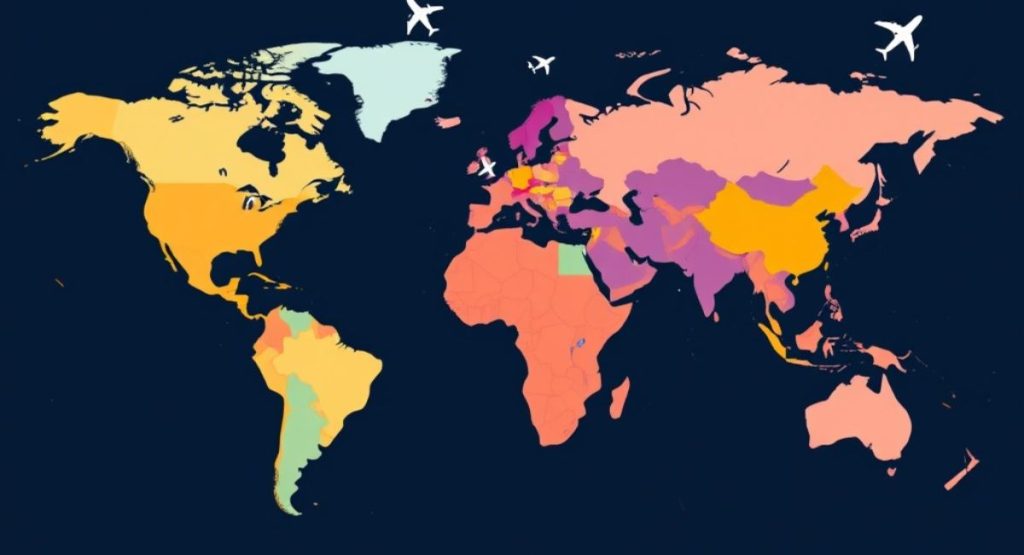Traveling to India is an exciting prospect for many American citizens, offering a rich tapestry of culture, history, and diverse landscapes. However, before packing your bags, it’s essential to understand the visa requirements and processes involved in entering this vibrant country. This guide will provide you with detailed information about the types of visas available, the application process, and other crucial details that American travelers need to know.
Understanding Visa Types
India offers various types of visas depending on the purpose of your visit. American citizens can apply for tourist visas, business visas, student visas, and more. Each visa type serves a specific purpose, and it’s crucial to choose the one that aligns with your travel intentions. Indian Visa for American Citizens.
The most common visa for American tourists is the e-Visa, which is ideal for short stays. It allows travelers to enter India for tourism, business, or medical purposes. The e-Visa system is designed to simplify the application process and is available for stays of up to 60 days. In contrast, long-term visitors may need to apply for a regular visa, which can be valid for six months to ten years, depending on the visa type.
The Application Process
Applying for an Indian visa as an American citizen involves several steps. The first step is determining the appropriate visa type based on your travel plans. Once you have decided on the visa type, you can proceed with the application process.
For e-Visas, the application is completed online. You will need to fill out the application form, upload your passport-sized photograph, and provide a scanned copy of your passport’s bio page. The application fee can be paid online, and the processing time typically takes three to five business days.
For regular visas, American citizens must visit the nearest Indian consulate or embassy. The application form can be downloaded from the consulate’s website. You will also need to submit your passport, photographs, and any additional documents required for your visa type. It’s advisable to allow ample time for processing, as regular visas can take several weeks.
Required Documents
When applying for an Indian visa, specific documents are required to support your application. For an e-Visa, you will need a valid passport with at least six months of validity from your date of arrival in India, a recent passport-sized photograph, and a credit or debit card for payment.
For regular visas, the document requirements may vary based on the visa type. Typically, you will need to provide your passport, photographs, proof of travel itinerary, and supporting documents such as a letter of invitation for business visas or admission letters for student visas. It’s essential to check the specific requirements for your visa type on the consulate’s website to ensure a smooth application process.
Processing Times and Fees
The processing times and fees for Indian visas can vary depending on the type of visa and the method of application. For e-Visas, processing usually takes three to five business days, and the fee is generally lower than that of regular visas. However, it’s crucial to apply at least four days before your intended travel date to account for any unforeseen delays.
For regular visas, processing times can range from a few days to several weeks, depending on the workload of the consulate or embassy. The visa fees also vary based on the visa type and duration. It’s advisable to check the latest fee structure on the official website of the Indian consulate or embassy before applying.
Health and Safety Requirements
As part of your travel preparations, it’s essential to be aware of any health and safety requirements when visiting India. Depending on your travel history and the regions you plan to visit, specific vaccinations may be recommended or required. Common vaccinations include Hepatitis A and B, Typhoid, and Tetanus. Indian Visa Requirements.
Additionally, travelers should be aware of the ongoing COVID-19 regulations, which may include vaccination proof, negative test results, or quarantine measures. Always check the latest travel advisories from the Centers for Disease Control and Prevention (CDC) and the U.S. Department of State before traveling.
Cultural Considerations
India is a land of diverse cultures, languages, and traditions. As an American citizen visiting India, it’s essential to be respectful of local customs and practices. Understanding cultural norms can enhance your travel experience and foster positive interactions with locals.
Dress modestly, especially when visiting religious sites, and be mindful of local etiquette. It’s also advisable to learn a few basic phrases in Hindi or the local language of the region you are visiting. This effort can go a long way in establishing goodwill and creating memorable experiences.
Conclusion
Traveling to India as an American citizen can be a rewarding experience filled with adventure and discovery. By understanding the visa requirements, application processes, and cultural nuances, you can ensure a smooth journey. Whether you are exploring the bustling streets of Delhi, relaxing on the beaches of Goa, or immersing yourself in the spirituality of Varanasi, being well-prepared will make your trip to India unforgettable.
Make sure to check for any updates regarding visa policies and travel advisories before your departure. With the right preparation, your journey to India will undoubtedly be filled with incredible experiences and lasting memories.



